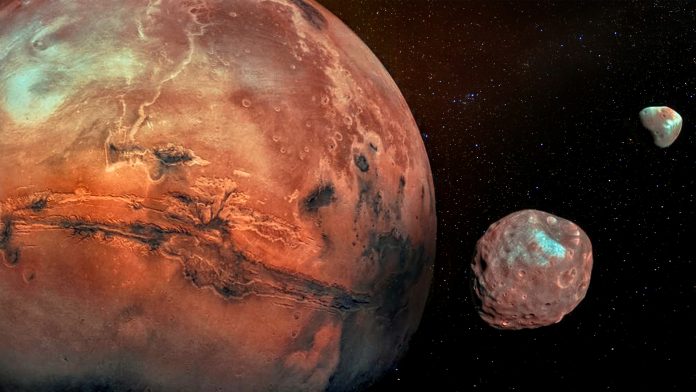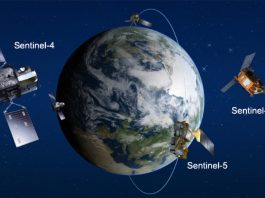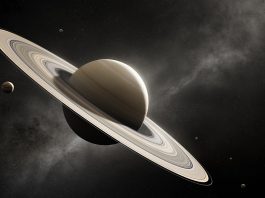Researchers from Vienna University of Technology, Austria, have been studying the effects of space weather on the Martian moon Phobos.
Phobos is so close to Mars that solar winds and particles from the red planet play a decisive role in its climate. A research team from Vienna University of Technology has now been able to measure these effects in laboratory experiments.
Paul Szabo, who is working on his PhD thesis in the research group at the Institute of Applied Physics at Vienna University of Technology, said: “There are different theories of how the Mars moon Phobos could have formed. It is possible that Phobos was originally an asteroid that was then captured by Mars, but it could also have been created by a collision of Mars with another large object.”
The surface of celestial bodies have been completely changed over billions of years by cosmic particle bombardment. The surface of the Earth remains unaffected by this because our atmosphere shields the particles. However, the geology of celestial bodies without atmospheres, such as our Moon or Phobos, can only be understood if it is possible to correctly assess ‘space weathering’.
Szabo added: “We used a mineral that is found on Phobos and bombarded it in vacuum chambers with different charged particles. Using an extremely precise balance, we can measure how much material is removed in the process and how much each particle affects the surface.”
The Martian atmosphere consists mainly of carbon dioxide. But in the outer regions of the atmosphere there are also larger amounts of oxygen. When particles from the solar wind penetrate there, oxygen ions can be created, which then hit Phobos at high speed and change the surface material.
Professor Friedrich Aumayr at the Institute of Applied Physics said: “With our measuring methods we were able to estimate the erosion of Phobos much more accurately than was previously possible. Our results show that the effect of oxygen ions from the Martian atmosphere cannot be neglected. It is also important to distinguish between the two sides of Phobos: While the solar wind causes the weathering on the side facing away from Mars, the bombardment from the Martian atmosphere dominates on the other side, when the Sun is shielded from Mars.”









